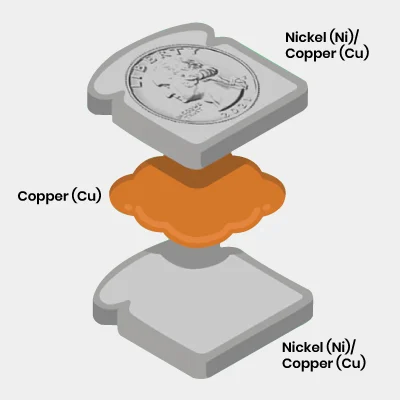
Mike tossed a penny on the counter. “Keep the change," he stated bluntly.
But what if I was aware that it had cost more to produce than it was worth? In 2023, 2.73 cents was used to manufacture one penny—nearly three times its worth! Billions of pennies, and America is losing millions of dollars annually.
Mike never cared for pennies. But now? He wondered to himself—if making them is a money-wasting venture, why do we continue making them? Let's find out the history of the little coin.
It costs 3.69 cents to produce one penny in 2024. That's almost four times its value! With more than 6.3 billion pennies produced in 2022, America lost around $110 million just producing them.
Why so costly? Zinc and copper, pennies' metal value, has skyrocketed. Inflation and shortages are merely the icing on the cake. And the coup de grâce: pennies are even being melted down by others for their metal, which is more valuable than the coin itself.
Do we have to continue producing pennies? Some believe not phasing them out will just shift their cost elsewhere. Others believe we should forget the penny once and for all and cut the losing millions.
Penny costs have risen over the decades due to material shortages and shifting economics. This is how the costs have changed:
| Year | Cost Per Penny |
|---|---|
| 2000 | 1.5 cents |
| 2010 | 1.8 cents |
| 2020 | 2.1 cents |
| 2024 | 3.69 cents |

A penny may appear to be copper solid, but it is not. New pennies consist of mostly zinc covered in a layer of copper. The US Mint has changed the composition of the penny many times in order to save money and adapt to economic conditions.
Today's pennies are made of 97.5% zinc and 2.5% copper. That is almost pure zinc, with a copper coating on the outside to keep it looking its traditional way.
So why mess with a good thing?
To save money. But ironically, since production costs now exceed their face value, even the less expensive zinc pennies may no longer be cost-effective to produce. Is the era of phasing them out altogether at hand?
It only makes sense—a coin that takes a cent to make costs almost four cents to make. There are reasons beyond metal prices, though.
Pennies were once made mostly of copper, but because of the increasing cost, the U.S. Mint went to 97.5% zinc in 1982. But even zinc is now costly. Metal market fluctuations worldwide, inflation, and supply chain disruptions have pushed costs up. To make one penny now costs 3.69 cents as of 2024—almost four times its face value.
Making pennies isn't so much about materials—it's a process. The U.S. Mint has to melt, roll, punch, plate, and stamp each coin. Each step needs specialized equipment, trained staff, and electricity, all of which are costly. Increased labor and electric costs are part of production costs too.
After pennies are produced, they have to be shipped, warehoused, and delivered to banks and merchants nationwide. Because they are of little money value but dense weight, shipping them is a loss and expense. Banks and traders also bear the expense of processing and rolling pennies, adding to the weight as well.
Since it costs so much to produce and ship, is it worth maintaining the penny in circulation?
The penny has been in existence since 1793, but should we keep it today? Individuals don't agree on whether we should keep it.
✓ Cultural and historical significance: The penny commemorates Abraham Lincoln and has been part of American money for centuries.
✓ Contributions to Charities: Charities accept donations of pennies, which collectively contribute.
✓ Price Rounding Issues: Prices would need to be rounded up without pennies, costing more for consumers.
❌ Costly to Make 3.69 cents is what it costs to produce one penny, which is squandering millions of taxpayers' money.
❌ Not Spent: Pennies are tossed in jars, lost, or simply not spent, making them worthless.
❌ Businesses Already Round Prices: Shops already round up purchases to the next five cents, which means pennies are not needed.
If there were no penny, how would everyday transactions change? Would consumers and businesses be impacted?
Cash prices would be rounded to the next nickel without pennies. Some worry about a "rounding tax," when companies round up prices, putting money in their pockets. But Canada has already phased out pennies at no monetary expense.
Store owners would gain time and expenses as they handled less money. Coin collectors and coin lovers would find pennies rare and expensive in the long run.
Cash use being a continuing decline, attention may focus on nickels, dimes, or digital transactions for smaller amounts. Would America take after Canada?
The future of the penny remains contentious. Although it is of historical and sentimental significance, its increasing cost of production and decreasing utility are issues.
Other nations, such as Canada, have phased out their pennies without severe economic repercussions. With the increasing popularity of electronic payments, should the United States do the same?
Whether the penny remains or departs, one thing is for sure—its place in American history and culture will not be forgotten anytime soon. What's your opinion? Should the penny remain?